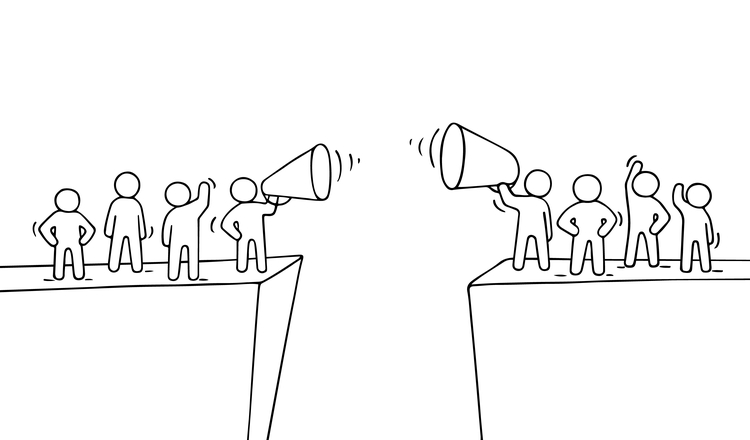Everyone in the entire world is talking about the Novel Coronavirus infection, also called COVID-19 or 2019-nCoV. How to stay safe, what to do in case someone you know shows the signs of an infection, and whether the government is acting fast enough to stop this outbreak before it affects more people.
While the focus right now is on controlling the pandemic and stopping the virus from spreading, one can’t deny that businesses suffer as well. We can’t tell for sure how this crisis will affect the economy. As the outbreak forces businesses to close their operations, economic damage is mounting across the world. Major retailers and companies are already reporting a drop in sales and activity, mostly because of “consumer uncertainty.” When you see the world spiraling into a coronavirus panic, that leaves little room for shopping.
What business owners need to understand is that this outbreak doesn’t mean they have to close up shop for good. At least, not if they know what to do in these trying times.
First Things First: Appoint a COVID-19 Task Force
Crisis communication is something many business owners know about but hope will never need. It’s a strategy that allows you to stay afloat during trying times, like when your business is going through a PR crisis and the public’s trust in you, drops. Or when there’s an external crisis like the new coronavirus that threatens your activity.
But for it to work, you need to have a crisis management plan and appoint a special team to create and implement it. Some steps you will likely need to take include:
Appoint a special task force who will be communicating about the company’s situation during the coronavirus outbreak. This will be the only link the outside world has with what is happening inside your business;
Discuss and decide what you want to communicate and what should remain internal. This will ensure all your communication efforts are consistent and can save you time when drafting new releases;
Be prepared to answer questions, but don’t guess if you don’t know the answer. The press, shareholders, or the consumers will likely have a lot more questions on top of the information you are distributing, so the task force should be prepared to answer them. If they do not know or are not prepared to answer a particular question, it’s important to share that openly with the public. A “we don’t know yet” is much better than guessing in this context.
Additionally, remember it’s also your responsibility to keep your employees safe. The CDC has some recommendations for businesses on how to move forward at this time. These guidelines include allowing your team to work from home if possible and how to protect those who still need to come into the office.
Create a Crisis Communication Plan
The crisis communication plan will outline a few major steps in how you communicate at this time. The plan helps everyone in your task force remain on the same page and easily distribute information to anyone in the need to know.
First, you should determine what type of information should be disseminated and who should get it. For instance, your audience may need to know different things than your shareholders or investors, who are privy to a lot more details about what’s going on in your business during the outbreak.
Then, you should evaluate what are the potential impacts the COVID-19 outbreak may have on your business:
- Will you reduce your activity?
- Will you take an indefinite break?
- Are you moving your activity exclusively online?
Once you have these scenarios, you can start developing holding statements for them to communicate with whoever necessary in time.
But when it comes to your audience, your crisis communication plan should focus on educating and empowering, and not selling. Yes, you are likely to see some drop in your sales, but now is not the time to go harder on the sales pitch.
People are genuinely scared about the future – their future. Right now, they are not interested in special discounts or exclusive deals considering they do not know what the future holds. Businesses must, therefore, work harder to help their audience understand the situation emerging, and provide comfort.
Once you have your messages, you can then decide on what is the best tool you can use to reach your audience.
How to Communicate with Your Customers During the COVID-19 Crisis
For many businesses, the outbreak can create a special opportunity to leverage the value of high-quality content and establish yourself as a trusted source.
Yes, content can help your business stay afloat. Data shows content marketing can generate three times more leads than even paid advertisements. But, yet again, this is not the time to use content marketing to boost sales. Instead, use it to help your audience, educate and inform them.
For the next period, you and your special task force will need to come up with a detailed plan on how you will communicate with customers in the future, for the remaining period of the outbreak.
Here are some useful things you can include in your crisis communication strategy:
1. Blog Posts That Aim to Inform and Educate
A lot of misinformation is currently spread across the world about this virus. And many people, who are genuinely scared, are unfortunately at risk of falling prey to the fake news. In some cases, this may end up hurting them directly.
This is an opportunity for you to help your consumers stay safe by creating different blog posts where you share genuine, trusted information that is relevant to them right now:
Creating content about official news and updates about the outbreak;
Tips on how they can truly protect themselves, such as practicing social isolation and remaining at home if they can;
Prevention methods that genuinely work, like washing their hands;
Tips on how they can stay informed, and spot fake news, etc.
When you’re creating these articles and blog posts, it’s really important that your team only checks the official recommendations of the CDC and other relevant institutions.
2. Leverage Email Communication
Email marketing is a tried and tested way to get a brand’s message across. You can use it now to share with your audience, important information that they will find useful.
Additionally, emails feel a lot more personal than blog posts, especially since you can personalize each message to make the reader feel like the text was written exclusively for them.
But what can you email about? Well, it’s the same principle as with the blog posts. Try to aim for a frequency that won’t make your audience cringe every time they see another message from you.
You can have just one weekly email you send out regularly, and then create additional ones as needed, such as if there’s good news you want your audience to hear about right now.
Other topics can include:
Updates on your business, and how you are coping with the outbreak;
If changes in your business right now are affecting the audience (like if there are some shipments they have to receive, will they be affected?);
Positive news;
Things to take their minds off the outbreak;
Coping while at home tactics, etc.
3. Social Media
Brands use social media to basically create a community of people around them. Consumers love to interact with their favorite brands on these platforms and routinely join the conversation through comments, shares, or even direct messages.
You should not take a break from social media posting during the outbreak. In fact, you should diversify the type of social media posts you create. So if you usually use social media to promote links to your products or new blog posts, your strategy should also include additional types of content, crafted for right now.
What does this mean? Well, think about what your consumers want to see on their social feeds at this time, and accommodate that. Then, add another dimension into the mix, one that’s only possible in social media marketing: make them join the conversation.
For example, if your employees are all working from home, you can share with your audience pictures with them hard at work in the PJs. Then, ask your audience to do the same in the comments, to get the conversation going and increase engagement. Do the same for the employees who are working with pets or with their kids right now, to cover multiple facets of the topic.
Other topics that can get people to comment can include:
Tips on how to stay productive while working from home;
What to do in their free time;
Screenshots of meetings where you have all your team members join a conference call;
News and updates about the virus, etc.
For social media, think of a few hashtags that can help your posts increase their reach, such as ‘#socialdistancing’ or ‘#workfromhome’. This way, your content may reach those users who don’t follow you yet, but if the content is good, they might start now.
4. The Classic: Press Releases
In this time of uncertainty, consumers are looking for brands and businesses that are communicating transparently with the public. And the best tool you have to maintain transparency is the press release.
Unlike blogs, emails, or social media posts, press releases allow you to be more informative and go deeper into some subjects that affect your consumers, shareholders, or partners directly. These texts can be viewed as in-depth updates on how your business is handling the outbreak, what measures you are taking to ensure safety, and how you will remain on your feet.
But for many business owners, the press release is a forgotten art form. After all, why take the time to figure out how to write one, and where to send it, if you can easily update your audience using a Facebook post?
Still, it may be worthwhile to go back to the classics. Here are a few tips about how to send out a press release:
How to Write a Press Release
Present the information you need, add your contact information, and make the press release “for immediate publication.” This means that as soon as the journalist or outlets receive it, it can be published.
Where to Send a Press Release
If you are a local business, send the release to all major news outlets in your area. If you have a few contacts, reach out to the people you know directly, and ask them to publish your content. If not, reach out to the outlets before and ask about any requirements they may have for press releases. For one thing, this will ensure your text can be published fast but it also helps you get noticed. If you simply send the press release via email, it may get ignored in the journalists’ inbox.
Additionally, there are platforms that can publish your press releases, such as 24-7 Press Release or Online PR News.
Use your own tools to publish and share your press release, such as your blog, social media, or email marketing.
How to Submit a Press Release
Check for any specific requirements these outlets may have for press releases, such as a maximum number of words, photo/video specifications, or even the style of writing. Each outlet may handle this process differently;
Don’t assume the journalists will edit or re-write the press release for you. A lot of times, your press release will simply be uploaded on the outlet’s site right after receiving it, so make sure the text has all the information you want distributing, and that it is grammatically correct.
Conclusion
These are trying times that will put many business owners to the test. You may be very worried about how your business will bounce back from this crisis, but remember one key thing:
Your customers are worried as well. Now’s not the time to try to sell more, and make money, but the time to genuinely help your audience get through this, with empathy.
Don’t worry if you are new to this and don’t know where to start. We can help you create the content you need, be it a blog post, email, or press release. We’re in this together!











